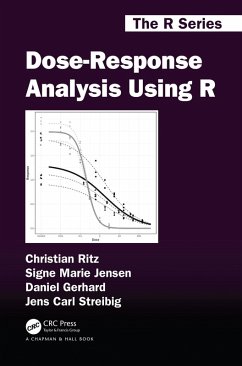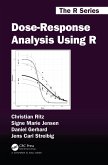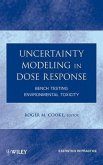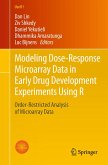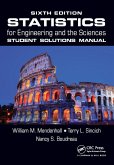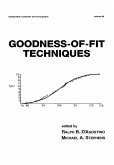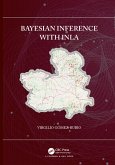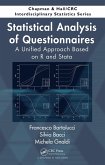In the 1940 and 1950s, dose-response analysis was intimately linked to evaluation of toxicity in terms of binary responses, such as immobility and mortality, with a limited number of doses of a toxic compound being compared to a control group (dose 0). Later, dose-response analysis has been extended to other types of data and to more complex experimental designs. Moreover, estimation of model parameters has undergone a dramatic change, from struggling with cumbersome manual operations and transformations with pen and paper to rapid calculations on any laptop. Advances in statistical software have fueled this development.
Key Features:
- Provides a practical and comprehensive overview of dose-response analysis.
- Includes numerous real data examples to illustrate the methodology.
- R code is integrated into the text to give guidance on applying the methods.
- Written with minimal mathematics to be suitable for practitioners.
- Includes code and datasets on the book's GitHub: https://github.com/DoseResponse.
This book focuses on estimation and interpretation of entirely parametric nonlinear dose-response models using the powerful statistical environment R. Specifically, this book introduces dose-response analysis of continuous, binomial, count, multinomial, and event-time dose-response data. The statistical models used are partly special cases, partly extensions of nonlinear regression models, generalized linear and nonlinear regression models, and nonlinear mixed-effects models (for hierarchical dose-response data). Both simple and complex dose-response experiments will be analyzed.
Dieser Download kann aus rechtlichen Gründen nur mit Rechnungsadresse in A, B, BG, CY, CZ, D, DK, EW, E, FIN, F, GR, HR, H, IRL, I, LT, L, LR, M, NL, PL, P, R, S, SLO, SK ausgeliefert werden.
- Ralf Schafer, University Koblenz-Landau
"Analysis of dose-response curves is one of the critical ways used to assess the effect of a toxicant (or other treatments) on plant growth. I have done many such analyses using the drc module in R developed by the authors of Dose-Response Analysis Using R. This new book is a wonderful new compendium of methodologies illustrated with relevant examples to conduct such analyses properly. A 'Must Have' resource for anyone relying on dose-response analysis in their work."
-Franck E. Dayan, Agricultural Biology Department, Colorado State University
"This book will be useful to both applied statisticians and a wide range of biologists. It combines a text on statistical modeling of dose-response data with lots of examples of using R and the drc package for data analysis. Appendix B, describing models for dose-response data, is an extremely useful and thorough overview of the huge number of possible models. It contains cross-references between equivalent models and a wealth of literature citations from diverse fields. This alone is worth the price of the book. The examples are drawn from the published literature. They provide a nice range of complexity, starting with simple introductions and finishing with quite complex analyses."
- Philip Dixon, Iowa State University
"Dose-Response Analysis Using R by Christian Ritz, Signe Marie Jensen, Daniel Gerhard, and Jens Carl Streibig has been published in The R Series of CRC press...The purpose of this book is to give a comprehensive overview and demonstrate the use of doseresponse analysis methods in R on real-life data sets. The focus is on model
fitting and interpretation...the book is very friendly to non-R users, explaining code in a clear way and is therefore perfectly suitable for R novices...The self-sufficiency of the chapters is evident from the way the necessary R tools are listed at the beginning of the chapter. However, the early chapters provide more explanation about the details of the R codes and consist of simpler examples and therefore, especially for readers who are unfamiliar with R, reading the chapters in the order of appearance may be more advantageous. Having said this, the book can be used as an 'R cookbook' for dose-response analysis, consulting only the chapter or
example of interest...This book can be of interest to (bio)statisticians and biologists with or without previous knowledge of R. It also can be used as a reference book."
- Anikó Lovik, ISCB News, July2020

